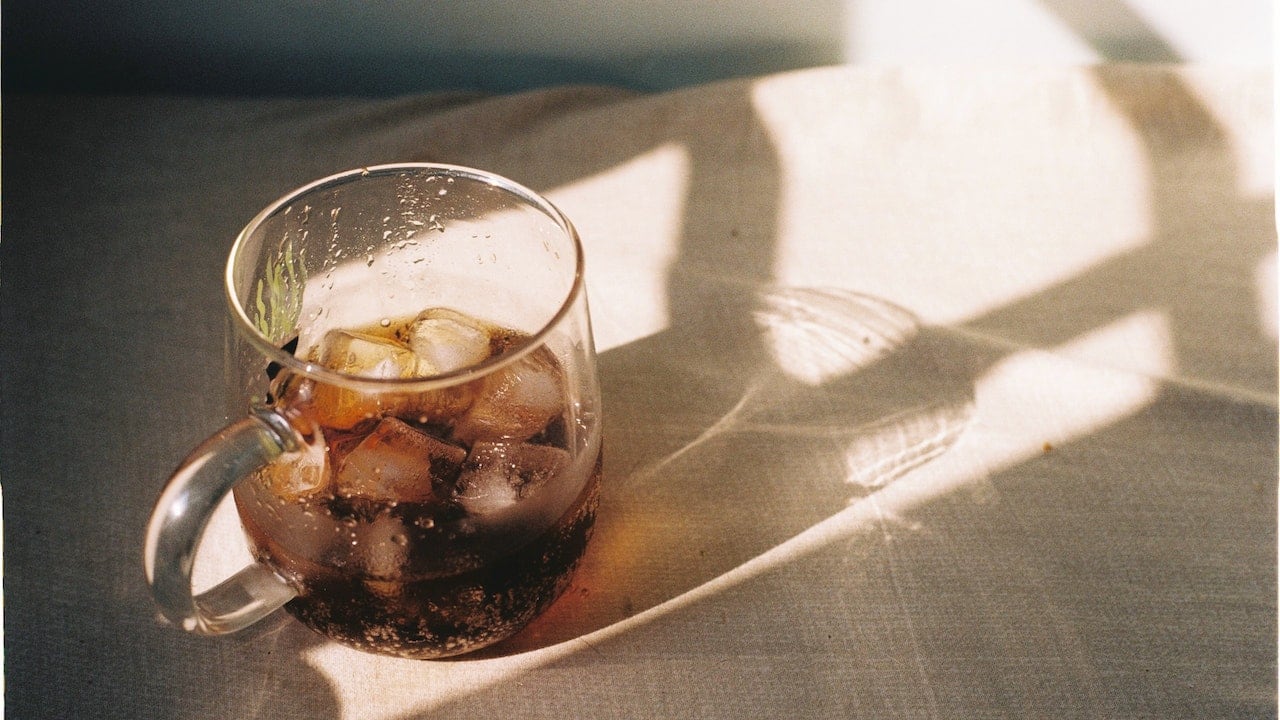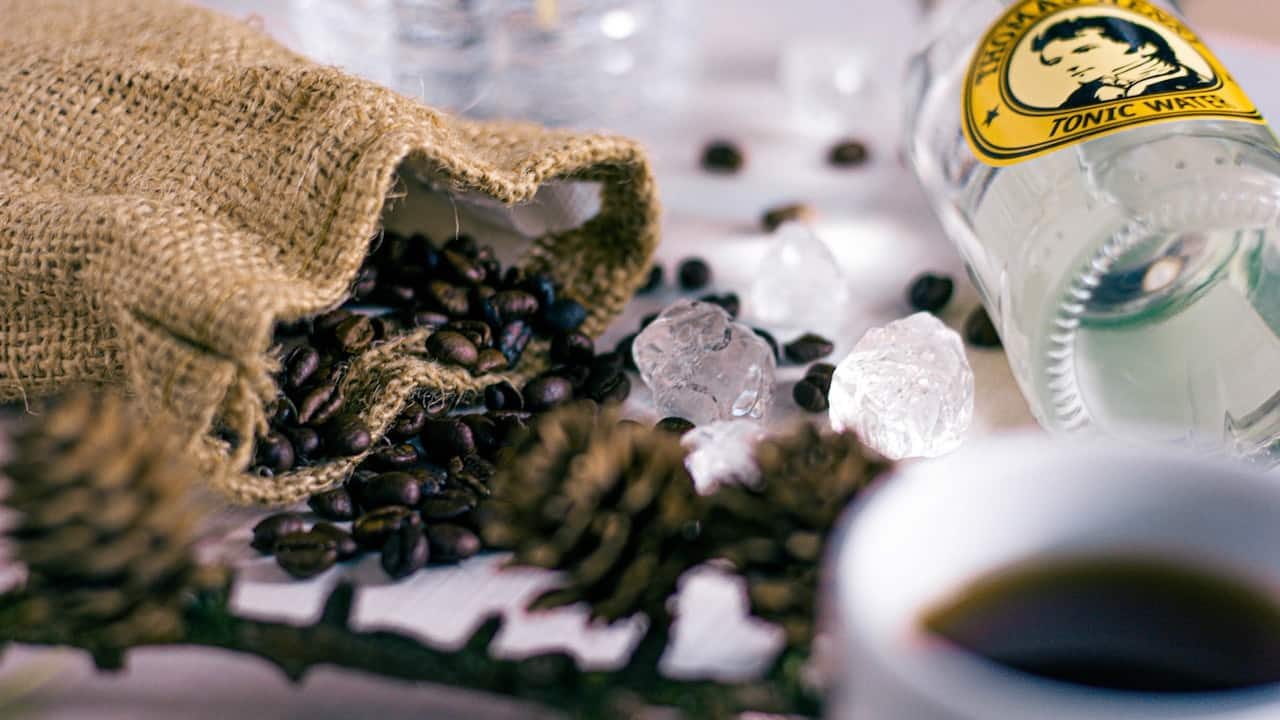



Cold coffee is hotter than ever before. Or so it would seem, as the biggest cafe chains around the world report a rise in demand for chilled or iced beverages in the last quarter. At Starbucks, cold drinks made up 75 percent of US beverage sales this summer. Other coffee companies, like Keurig and Maxwell house, have introduced new products keeping this rise in demand in mind: single-cup brewers and instant iced lattes with foam are now hot-ticket items on their menus.
The reasons for this are several. According to surveys by analyst firms like Euromonitor International, cold coffee beverages are considered more refreshing, better tasting, and significantly, better looking—meaning they are more photogenic and social media-friendly. Indeed, cold brew coffee has been the fastest-growing non-alcoholic drink on restaurant menus over the past decade, as an analyst at Technomic told CNN.
 French soldiers in Algeria in the 1830s began adding cold water to coffee when their milk supplies ran out. (Photo by Anh Dang via Pexels)
French soldiers in Algeria in the 1830s began adding cold water to coffee when their milk supplies ran out. (Photo by Anh Dang via Pexels)
The idea of adding some ice to one’s cup of java goes back centuries. It is widely acknowledged that iced coffee originated in 19th century Algeria, during the Siege of Mazagran by the French, following the Treaty of Tafna in 1837.
The story goes that French colonial troops began to supplement their coffee with cold water when they ran out of milk rations. When the triumphant soldiers returned home, they began to request this drink in local cafes, and “Cafe Mazagran” was born, even giving its name to the glass it was served in. It can be found in European cafes even today, served with a bit of sweetener and lime juice.
While the Germans and Italians would invent the ‘eiskaffee’ and ‘affogato’ by adding ice cream to their iced coffees by the end of the 19th century, French missionaries had brought the bean to east Asia, specifically Vietnam, by 1857. Today, Vietnam is the second-biggest exporter of coffee to the world, after Brazil (India is at No. 5). But there’s a second contribution to coffee culture: The Che Phe Sua Da, widely known as Vietnamese coffee, that melds the edge of dark roast coffee brew with the sweetness of condensed milk and ice.
India’s own coffee journey is said to have begun in the 16th century, when Baba Budan, a sufi saint, brought a handful of beans back from the port city of Mocha in Yemen, and planted them in Chikmagalur in Karnataka. Dutch colonizers planted coffee in the Malabar region, and the British set up Arabica plantations in the hilly regions of south India—spreading to the Nilgiris as local entrepreneurs got into the business.
Today, India is the fifth-largest exporter of coffee, with a 2 percent growth this year alone. But for years, it was a staple beverage of south India, while north India relished the tea that was grown in the upper Brahmaputra valley in Assam. Arguably, access to and nationwide taste for coffee began to develop in the mid-20th century, when two major instant coffee brands launched in India. Nescafe, launched in Switzerland in 1936, travelled the world as part of US soldiers’ emergency rations during World War II.
It came to India in 1963; and five years later, Brooke Bond, the UK-based company that had set up its India HQ in Kolkata in 1901, launched Bru, India’s first instant coffee-chicory mix. The Bru-Nescafe rivalry is one for the ages, defining much of India’s first wave of coffee culture.
Meanwhile, on the other side of the world, the second wave of coffee was beginning to take shape, thanks to Starbucks’ growing popularity in the 1970s. This was a time when coffee began to be seen as a more accessible lifestyle choice—a social one, a more relaxed one. And coffee shops helped this perception along, through architecture, interior design and yes, eventually menus that featured frappuccinos, a significantly less severe cold coffee drink than espressos with their bitter bite.
The frappé—a word that means ‘iced’ or ‘chilled’ in Greek and a drink that’s an integral part of postwar outdoor Greek coffee culture—itself has an interesting origin story. It was born in 1957, completely by accident at a trade show in Thessaloniki, Greece’s second-largest city, when Dimitris Vakondias, an employee of Nestle, mixed Nescafe with cold water in a shaker when he couldn’t find hot water.
Internationally, Nestle took ownership of the frappe rather quickly, and earlier this year, Nescafe began to market its all-in-one Frappe, a cold premix. But the idea itself has lived among us here in India for decades—blending instant coffee, milk, sugar and ice has been the go-to way of drinking cold coffee in middle-class Indian homes; along with its hot counterpart, the phenti-hui (dalgona) coffee.
While it is unclear exactly when cold coffee began to be served in Indian cafes and shops, this almost-dessert like concoction has been an inescapable part of Indian beverage culture for decades. You could find it at India Coffee House, India’s colonial-era cafe chain that’s been around since 1957, the haunt of left-wing intellectuals who’d discuss the state of things over Formica-topped tables as waiters in crisp uniforms would serve “Iced Coffee with Cream” and chicken sandwiches.
 In 1996, the late VG Siddhartha founded Cafe Coffee Day at Bangalore’s posh Brigade Road. In 2000, the Turner Morrison-founded Barista made a splash by setting up 128 stores in India within 3 years. (Photo by Lucie Liz via Pexels)
In 1996, the late VG Siddhartha founded Cafe Coffee Day at Bangalore’s posh Brigade Road. In 2000, the Turner Morrison-founded Barista made a splash by setting up 128 stores in India within 3 years. (Photo by Lucie Liz via Pexels)
In the 1970s, you could find it at Nirula’s, Keventers and DePaul’s in Delhi. Nirula’s, a radical first in fast-food in India, mimicked American QSRs and brought to life the glorious “Burj Khalifa-level-tall” shakes of Pop Tate’s from Archies comics. Keventers started as a colonial effort to revitalize India’s floundering dairy industry, but was serving butterscotch, vanilla and coffee-flavoured milkshakes by the late-20th century.
DePaul’s started as a cosmetics shop on Janpath, and transformed into an unusual business proposition—selling cosmetics, coffee, paneer balls and momos under clinical fluorescent tubelights in a matchbox of a shop—by the 1970s. Mr Kathpaluia’s venture was high-risk, but it did work; and it continues to hold a very special place in the hearts of Delhi’s coffee lovers for its very specific taste, flavours, affordability and nostalgia value.
Arguably, India’s cafe culture was truly incepted in 1996, when the late VG Siddhartha founded Cafe Coffee Day at Bangalore’s posh Brigade Road. In 2000, the Turner Morrison-founded Barista made a splash by setting up 128 stores in India within three years. Both featured a substantial roster of frothy cold coffee drinks that fused milk, sugar, ice, coffee and syrups—chocolate, vanilla, caramel, hazelnut—and ice cream.
None of this was original—Starbucks had introduced frappucinos by 1995; and before that, a barista at Coffee Bean and Tea Leaf had invented the ‘Ice Blended’ in California in 1987. But for the young Gen Xers and millennials, really the first generations to begin experiencing the delights of coffee beyond the instant coffee pouches found at grocery stores, cold coffee would become the gateway to a deeper engagement with the bean.
In the last decade, India’s coffee culture has grown by leaps and bounds, as startups have lined up to cater to a rising demand for better quality coffee from customers educated about the best roasts, brewing methods, and mixes. Cold brew coffee, a revolution effectively brought about by Sleepy Owl, is now a big seller even on Starbucks’ menu.
No doubt it’s that generation of college students, who sat in cafes, sharing dark chocolate cakes and blueberry muffins and tall frosted glasses of coffee, as they exchanged thoughts on love and life in a new millennium, who now know that adding a twist of orange peel to their iced espresso is just the refreshing antidote to ever-hotter tropical summers.
Discover the latest Business News, Sensex, and Nifty updates. Obtain Personal Finance insights, tax queries, and expert opinions on Moneycontrol or download the Moneycontrol App to stay updated!
Find the best of Al News in one place, specially curated for you every weekend.
Stay on top of the latest tech trends and biggest startup news.